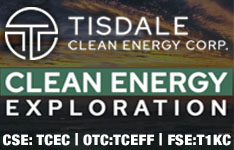Zevra Therapeutics Inc. (ZVRA:NASDAQ), a company specializing in rare disease therapeutics, has announced positive final results from its Phase 2 clinical trial evaluating the safety and tolerability of KP1077 (serdexmethylphenidate or SDX) for treating idiopathic hypersomnia (IH). The results were presented at SLEEP 2024, the 38th annual joint meeting of the American Academy of Sleep Medicine and the Sleep Research Society, held in Houston, TX from June 1-5, 2024.
The Phase 2 clinical trial, a placebo-controlled, double-blind study, demonstrated that KP1077 was well tolerated and showed meaningful clinical improvements in patient-reported assessments of daytime sleepiness, sleep inertia, and brain fog. The study was designed to evaluate safety and tolerability and was not powered to demonstrate statistical significance, but it included several important secondary and exploratory endpoints. These included changes in the Epworth Sleepiness Scale (ESS) total score, the IH Severity Scale (IHSS), the Sleep Inertia Visual Analog Scale (SIVAS), and a new scale to assess the symptoms and severity of brain fog.
"We are encouraged by the positive results of the Phase 2 clinical trial, which serve as further support of KP1077 as a strong candidate to treat patients struggling with idiopathic hypersomnia," said Adrian Quartel, MD, FFPM, chief medical officer of Zevra in a press release. "We believe that KP1077 has great potential to provide a differentiated treatment option for patients underserved by currently available therapies."
KP1077 was well tolerated at all dose levels evaluated in the trial, including the highest dose of 320 miligrams daily, regardless of the dosing regimen: once daily (QD) or twice daily (BID). Adverse events (AEs) were similar to other methylphenidate products, with the most common AEs including insomnia, headache, anxiety, decreased appetite, and nausea. Most AEs occurred during the titration period, were mild, and did not lead to early discontinuation.
Rare Disease Therapeutics Sector
According to Mordor Intelligence, "The global rare disease therapeutics market is poised for significant expansion between 2018 and 2028, driven by a confluence of factors including advancements in genetic research, targeted therapies, and regulatory incentives." Promising research in gene therapies and precision medicine is at the forefront of the global rare disease therapeutic market. These groundbreaking developments are propelled by a deeper understanding of the genetic underpinnings of rare diseases.
The market is further bolstered by regulatory efforts, such as the Orphan Drug Act in the United States, that incentivize investments and foster an attractive landscape for pharmaceutical entities focused on rare disease treatments.
"As the prevalence of rare diseases continues to rise, with an estimated 7,000 conditions identified to date, the demand for specialized therapeutics is expected to soar," Mordor Intelligence noted.
In a June 6 report, Roth MKM analyst Dr. Jonathan Aschoff maintained a Buy rating on Zevra Therapeutics and a 12-month price target of US$19.
The North America Rare Disease Therapeutics Market is experiencing a period of significant growth, with an expected Compound Annual Growth Rate (CAGR) of 10.88% through 2028.
According to Yahoo! Finance in March, "The market is benefitting from a combination of factors, including an increase in the prevalence of rare diseases, a supportive regulatory environment, advancements in biotechnology and pharmacology, and a burgeoning patient advocacy movement."
The supportive regulatory environment in North America, with incentives for drug development under the U.S. Orphan Drug Act, such as market exclusivity, tax credits, and prioritized review, further stimulates the growth of this specialized therapeutics sector.
"Investments in biotech innovations have also catalyzed the development of gene and cell therapies, which hold promise for addressing the unmet medical needs of rare disease patients," according to Yahoo! Finance.
Additionally, the concerted efforts of patient advocacy groups have played a crucial role in promoting research and ensuring access to necessary treatments. As Yahoo explained, "Trends shaping the future of the Rare Disease Therapeutics Market include the rise of precision medicine, with increasingly personalized treatment strategies . . . Patient-centric care has become the focus, with a significant rise in advocacy and community engagement driving market developments . . . The integration of advanced genomics into diagnostics and treatments further exemplifies the shift towards more individualized therapies."
A Catalyst: Approval in Europe
The successful results from the Phase 2 trial present several key catalysts for Zevra Therapeutics and the future of KP1077 as a treatment for idiopathic hypersomnia. Firstly, as mentioned in the company press release, the European Commission has granted Orphan Drug Designation for KP1077 for the treatment of idiopathic hypersomnia.
This designation provides incentives for the development of drugs for rare diseases and could expedite the path to regulatory approval in Europe. Secondly, the data gathered from the Phase 2 trial's secondary endpoints will inform the design of a potential Phase 3 clinical trial. This trial would aim to demonstrate the statistical significance of KP1077's efficacy and safety, a critical step toward regulatory approval and commercialization.
Additionally, the pharmacokinetics data on KP1077, presented at SLEEP 2024, showed that the peak exposure of SDX-derived d-MPH after a nighttime dose occurs the next morning, supporting the nighttime dosing of KP1077 for patients with IH who suffer from excessive daytime sleepiness (EDS) and sleep inertia. The Phase 2 trial demonstrated clinically meaningful improvements in IH symptoms, with patients showing significant improvements in EDS as assessed by the change in Epworth Sleepiness Scale (ESS) and in other symptoms measured by the IH Severity Scale (IHSS), Sleep Inertia Visual Analog Scale (SIVAS), and Brain Fog Scale (BFS). These improvements bolster the therapeutic potential of KP1077 and its promise as a treatment for IH.
Finally, there was positive commentary from study investigators, such as Dr. Christopher Drake, who noted, "The clinically meaningful impact for both the safety and efficacy were well demonstrated by patients showing significant improvements in IH symptom severity such as sleep inertia, excessive daytime sleepiness (EDS), and patient-reported IH-specific outcomes," underscores the potential impact of KP1077. Zevra Therapeutics continues to advance its mission to develop and commercialize therapies for rare diseases, with KP1077 positioned as a promising candidate for addressing the unmet needs of patients with idiopathic hypersomnia.
A Buy-Rated Stock
In a June 6 report, Roth MKM analyst Dr. Jonathan Aschoff maintained a Buy rating on Zevra Therapeutics and a 12-month price target of US$19. On Monday at the SLEEP 2024 conference, ZVRA presented positive final results from its Phase 2 trial evaluating KP1077 in idiopathic hypersomnia patients.
As he noted, the results were enough to usefully inform the design of a Phase 3 trial, and we believe that such a trial will enroll at least 100 patients treated for longer given that it takes placebo about three-four weeks to return to baseline, be of the same randomized withdrawal design (typical for an indication like IH and narcolepsy), and be randomized 2:1. The Phase 2 trial highlights included statistically significant results with twice-daily (BID) dosing for the Epworth Sleepiness Scale (ESS; p=0.005) and Idiopathic Hypersomnia Severity Scale (IHSS; p=0.013) endpoints during the randomized controlled two weeks for KP1077 versus placebo, and a trend for Brain Fog Scale (BFS; p=0.06). KP1077 was well-tolerated regardless of dose or dosing regimen, with adverse events (AEs) being similar to other methylphenidate products.
 Streetwise Ownership Overview*
Streetwise Ownership Overview*
Zevra Therapeutics Inc. (ZVRA:NASDAQ)
Roth MKM's 12-month price target of US$19 per share for Zevra Therapeutics is based on a discounted cash flow (DCF) analysis using a 15% discount rate applied to all cash flows and the terminal value, which is based on a 5x multiple of the firm's projected 2031 operating income of approximately US$272 million. Commercial success outside our modeled products and territories would provide an upside to the valuation, the analyst noted.
Ownership and Share Structure
Reuters provided a breakdown of Zevra Therapeutics Inc.'s ownership and share structure, where management and insiders own approximately 8.39% of the company.
Institutional investors have significant stakes in Zevra, owning 33.85% of the company. Nantahala Capital Management LLC owns 5.86%, with 2.45 million shares. BlackRock Institutional Trust Company holds 5.26%, with 2.20 million, and The Vanguard Group Inc. has 4.07%, with 1.70 million.
The rest is with retail investors.
The company has 41.85 million shares outstanding with 38.34 million free float traded shares and a market cap of $194.62 million.
Important Disclosures:
- James Guttman wrote this article for Streetwise Reports LLC and provides services to Streetwise Reports as an employee.
- This article does not constitute investment advice and is not a solicitation for any investment. Streetwise Reports does not render general or specific investment advice and the information on Streetwise Reports should not be considered a recommendation to buy or sell any security. Each reader is encouraged to consult with his or her personal financial adviser and perform their own comprehensive investment research. By opening this page, each reader accepts and agrees to Streetwise Reports' terms of use and full legal disclaimer. Streetwise Reports does not endorse or recommend the business, products, services or securities of any company.
For additional disclosures, please click here.



































